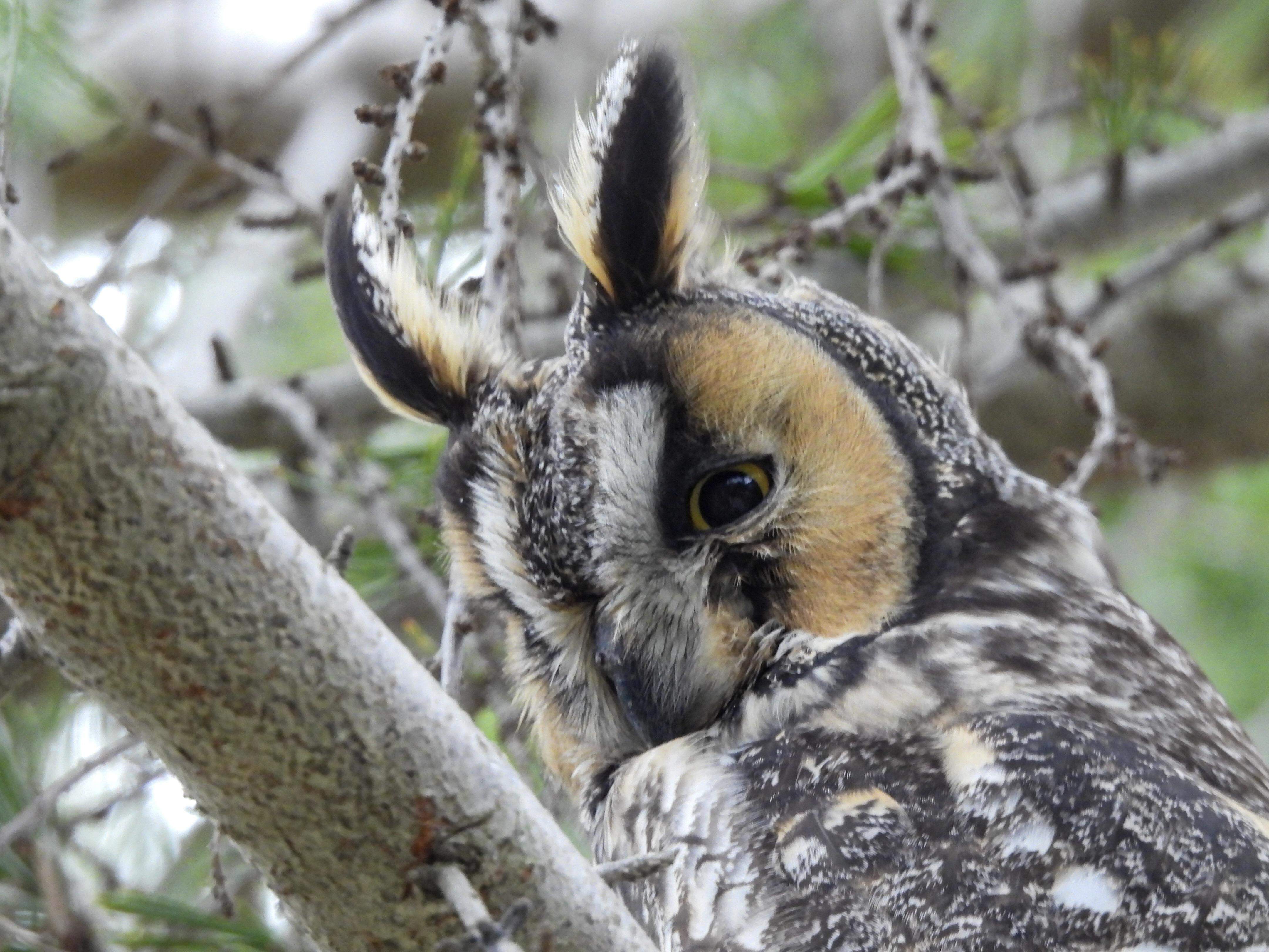Some local plants might be edible and even delicious, but they are either way to costly to grow or harvest, or they are nigh impossible to preserve. Or they simply are edible, but not sustaining, like sucking nectar from stinging nettle blossoms.
Some are acquired tastes like e.g. turnip tops. You could probably harvest tons of them, but there is no real market for it.
Or take edible flowers, you basically can’t preserve them, and all you can do is put them on a dish for decoration.
Pearl Onions are a borderline case, for example. Between harvest and sitting in the pickling juice they only have a few hours (3-6, IIRC), or they are a case for the compost heap.
Transportability is a huge consideration. Pawpaws can’t be transported nationally, for example. The plants we eat have been bred for maximum marketability, which includes getting the produce from where it grows to where people need it.
Exactly. Instead of complaining people can just grow them themselves. It’s not like commercial growers have a monopoly on growing food.
Otherwise this is a typical lemmy complaint. Someone who isn’t me didn’t do a thing I like. That makes someone else besides me bad. If there are things you want to exist in this world then you have to do things. This realization is real adulthood.
I planted my garden this year and then had that realization, so I divorced my husband and lost my garden. I went back and grabbed all the veggies from it 3 months later: some small potatoes, some peppers, small onions, and I grabbed my baby strawberry plants that survived the summer without regular watering. My ex has admitted he let my garden die. Be the change you want to see in the world
For Polish speakers theres this book by prof. Łuczaj: https://lukaszluczaj.pl/dzikie-rosliny-jadalne-polski-pelny-tekst/ - every plant that grows in our region and can be eaten. In some more edgy cases backed by his own experimentation on himself.
Does he also document the fuckable plants? I’m asking for a friend
Oh boy are you in for a surprise…

There’s his “Sex in the great (grand?) forrest”. Its about best plants to fuck on (or under). Mostly. As side notes it does point out some local plants in particularly interesting shapes, or some one might rub themself against… This guy is commited. And also an actual true professor on an actual university.
So… cool story
Ann Reardon from How to Cook That, took Coke, and tested it for HFCS, it of course indicated it was in there, then she took a Mexican Coke, and it also indicated, but it claims not to use it.
Apparently, the acid in the Coke breaks down the sucrose in the cane sugar, making the product very close to the HFCS variant. She followed up with a blind taste test (very limited size, just her family) and found they were very close in flavor.
It would appear that we do to some decent extent enjoy HFCS.
She’s either from Australia or Aotearoa. I don’t expect their coca cola to be the same recipe as in the US.
Have you seen the size of the average American?
Who is ignoring that we don’t like HFCS? It’s downright an addictive substance.
I think if you ask 100 Americans, they will overwhelmingly be down on HFCS.
I don’t think I’ve ever heard anyone that’s tried coke with cane sugar and doesn’t say that it’s better than regular cook.
Everybody I know that drinks Coke thinks that Mexican Coke is superior, but is hard to get in a lot more expensive.
There’s a pretty significant campaign against it.
I live in a subtropical climate and it seems like most typical garden plants are not really good for our weather, it’s too hot for some and too wet for many who like hot.
Our winners are:
Trees- starfruit, longan, mango, papaya all do well.
Garden -
summer, wet season - Okra mostly. Hong Tsoi, Eggplant (little ones) Watermelon (little ones) sweet potato (Stokes Purple), tomatoes, basil.
winter, dry season- Collards, peppers, broccoli (Green Magic) cauliflower, arugula, fennel, lettuce, radishes. Cilantro, or dill. A lot of the typical northern summer plants can be started in December or January to grow in the “spring” that runs from January to April ish.
In between - peppers, fennel, mustard greens, eggplant, pumpkin type squash (but bugs always eat it) tomatoes.
Tbf, many are kinda disgusting to modern palettes. Lamb’s quarter sucks compared to stuff like spinach, kale, or collards. Pokeweed needs extensive preparation to make it safe. Wood sorrel, horseherb, and prickly pear grows where I currently live, but I haven’t tried them yet. My dog likes horseherb despite the little spines for some reason. My grandmother used to fry dandelions and plaintain which was pretty good.
For another example of a plant that just didn’t make it into modern society at scale, there are skirrets. Carrots, parsnips, and skirrets were related umbellifer plants with edible, nutritious roots, cultivated over the centuries as food. Carrots and parsnips were responsive to breeding for root size, and could produce comparatively huge roots, but skirrets never really did. Once the potato was brought over from the new world, the skirret fell out of favor.
I always find it interesting when comparing cuisine between cultures of stuff that exists in different places but only eaten in one (or a few) of them. Like ok, I get that if you’re not used to much seafood in general you maybe will eat some grilled salmon but you’re not gonna be eating the guts out of crabs or lobsters or whatever. But then there’s something like burdock root, which grows in the US, doesn’t have a strong taste, and is just like various other root vegetables we do eat (although not as sweet as something like a carrot). But the US doesn’t eat it while east Asia does.
Wood sorrel is an interesting case. In the US, we don’t commonly eat our native wood sorrel, i.e. the thing that looks like clover. But we do eat starfruit. Starfruit is also a type of wood sorrel, just one that has a much larger, sweeter fruit, that’s been selectively bred for agriculture. But if you look at the fruits of our native plant, they do look like tiny starfruit! link
They’re still tasty. They’re very tart, but with no sweetness. They could be good to top a salad. But you’d have to pick hundreds of them to get as much food as you get from one starfruit, and it wouldn’t be as tasty as a fruit. Like eating a lemon instead of an orange.
That said, I still love them! The leaves and stems also have a good taste. They’re everywhere and have a lovely burst of flavor. Just be careful if you have kidney stones or kidney disease, any kind of wood sorrel - including starfruit - has oxalic acid which can be tough on kidneys.

Toxic web.
Got the same in the UK, had to disable uBlock for Cloudflare to let me through.
How do you get dandelions to not taste like poison?
She made something like this: https://www.allrecipes.com/recipe/214172/fried-dandelions-appalachian-style/
Oh, the flowers. The leaves are edible and even taste good aside from the bitterness
Oh! I will get to taste appalachian cuisine (*_*) Thank you !
Every September, I make a year’s supply of beautyberry jelly.
I do something that I don’t recommend people do: I can it. I’m like 5 years in, and I haven’t had a problem yet. There’s a series of pages in my Ball canning recipe book that the beautyberry jelly recipe I use conforms pretty close to, but it isn’t USDA approved or otherwise published by some authority as safe for canning, I’m going to recommend you avoid this.
Beautyberries, if you’re not familiar with them, are a bush/shrub native to the American southeast. The plant looks like a bunch of stems with leaves that grow along them, along with clusters of tiny white flowers in the spring at the base of each pair of leaves, that turn into vivid purple berries in the fall. The leaves can be used as a mosquito repellent if rubbed on clothing, and the berries are edible…although they’re bitter and astringent. Boiling them in water to make an extract and making jelly from that extract results in a bright red jelly that tastes like strawberry and tea.
It’s something of a pain to harvest, so it pretty much isn’t commercially done.
Everything I’ve seen from Ball/Kerr has been safe canning recipes! Love their stuff, use their website for recipes often.
Oh I’ve misread. You picked a berry close to it and are substituting that in, yeah? I’d try it on myself but probably wouldn’t give it away.
Sounds like a beautiful jelly though!
Yes, I have Ball’s Complete Book Of Home Preserving (which is a terrible title, as the book contains no information about dehydrating, freeze drying, jerking or brewing, only water bath and pressure canning). It has a procedure for “berry” jelly where it lists half a dozen different kinds of berries and how to extract juice from them, to include elderberry, and then you use a quantity of said “berry” juice in a standard jelly recipe. Independent of this, I’ve found a beautyberry jelly recipe that resembles this procedure, so I feel okay canning it, and have done so for years now. I’m going to stop short of recommending it to anyone else. By all means, if you’ve got access to beautyberries, make the jelly, but can it at your own risk.
No beautyberries here! Tons of wild grapes though. Horrible producers those are though. All vine and no grapes!
This is dumb. Most plants resist cultivation. Bragging about being able to afford them does not make you Superior.
Also yields are important
Our current style of industrialized agriculture isn’t viable long-term (meaning: millenia); too much damage to the ecosystem.
It’s the kind of farming you need in order to provide for the high density
rabbit hutchescities that are supposed to save the planetNo, obviously it is just the most profitable, which is the only thing that matters under capitalism. With better planning we could totally use sustainable farming techniques, and have comparable yields.
And I don’t know what you are on about with cities. Cities are the densest, and thus most efficient way of human settlement. Other forms of settlement are less dense, therefore require more land, therefore leave less land for agriculture (and result in higher transportation costs) which means agriculture has to have higher yield per unit of area.
Resist cultivation or have some other undesirable properties. Often low yield, short harvest, low yield, difficult picking or transporting.
A favorite example of mine: oak’s acorns are sometimes edible. Roughly one in ten oaks produce edible acorns. They are indistinguishable from inedible ones unless you try them out - but inedible ones are fairly poisonous. The gene for edible acorns is recessive and it takes at least a decade before you know if a newly planted oak produces edible acorns or not, with a 10% probability of the former. It is just practically impossible to select for this criterion. Thus, we don’t eat acorns.
Not sure that acorns are inedible. They just need to be processed.
Also acorns ain’t particularly nutritious.
Often low yield, short harvest, low yield, difficult picking or transporting.
And let’s not forget, low yield.
Let us not!
Low yield due to overly specific conditions that are hardly met
Low yield due to short production window
Low yield due to long growth time
Low yield just because
You just remove the tannins by soaking them, it’s not really a major problem. I tried it before, they were fine but fairly bland.
Isn’t acorn flour edible after you rinse out the toxins? Some north american tribes did essentially “farm” acorns (They managed groves of oak) and iirc that’s how they dealt with the toxicity.
Acorns are like the easiest thing to forage, though. I agree that foraging isn’t as simple for many people as the OP makes it out to be, but acorns are a bad counter example.
They are high in tannins, which your body is pretty good at processing in reasonable quantities (they’re in tea, coffee, and wine), but many acorns DO have unreasonable quantities of them and they can cause organ damage. Luckily, tannins are water soluble, so you just need to crack them open and soak them in water for a few days, then rinse and they’re safe to eat.
I thought we eat acorns after processing them? There are cuisines which involve acorns as main ingredient.
Let the deer and squirrels and wild pigs eat the acorns, then eat the deer and squirrels and wild pigs. Easy!
I mean, I think that goes back to the whole “industrial farming” point. If it can’t be farmed, it won’t be commercially available. But there are plenty of plants that you could scavenge, if you knew what to look for.
One of my personal favorite niche plants is osha root. It’s one of the best cures for a sore throat. It tastes a little bit like dirty root beer, and it’ll numb your entire throat when you chew on it. Native Americans kept some around for medicine. You can even grind it up and smear it on shallow scrapes to numb the area. You can find it in teas like Throat Coat, which is a sort of secret weapon for performers and public speakers whenever they have a sore throat.
But it can’t be commercially farmed, because it exclusively grows in the Rocky Mountains where a specific type of fungus helps it thrive. It isn’t commercially viable to market to the masses like throat lozenges, (even though it is just as effective in reducing sore throats) because it has to be scavenged.
there are plenty of plants that you could scavenge
But what happens when “you” becomes a million people? A hundred million people? A billion people? Where I live, we can’t even have a nice field of flowers because a hundred Instagram models will trample and ruin it before spring is over. Scavenging and foraging literally cannot feed the 7 billion human mouths on this planet.
8 billion now.
If it can’t be farmed there cannot be enough for everyone, but it will be exclusive to a select few. How they are selected is irrelevant.
My point wasn’t that commercial farming is bad. With 8 billion people on the planet, it’s a necessity. My point was simply that scavenging to supplant your needs should be more encouraged, and the knowledge should be passed down.
Most people live in large cities where this is not feasible for everyone at once. Also transportation is expensive.
If you have a garden (I recommend far from the street to avoid pollution), some wild plants will grow in it. It’s good to know which ones you can eat and to be able to distinguish them from poisonnous ones. This way, weeding can become a sort of harvest.
Isn’t that what they meant by industrial agriculture preventing widespread use?
I think the point is it doesn’t prevent wide spread use. If a plant resists cultivation then it’s not worth it to try to farm, either industrially or in your back yard. Especially if you’re trying to farm for sustenance.
Lamb’s lettuce superiority! They don’t need cultivation, grow everywhere even if you don’t want them to grow, and they are quite edible, also delicious.
alot of tropical ones tend to be poisonous too, because so much diversity of insects, trying to eat them develop toxins in thier parts. also some plants have to super poisonous because insects evolve to build resistance them, so plants have to respond by becoming more toxic. thats why poisonous plants are kinda invasive.
yes english ivy is poisonous(berries) to non-avians.
I hate to bring race and racism into this, but one reason why I laugh at many racists, especially European racists, is how they claim they love their own national culture but do jack shit to have ANYTHING to do with its pre-colonial cuisine. Take British cuisine for example. While obviously people in medieval England (even the richest people at the time) had far fewer options than most people in the UK today, but they still used many herbs and plants for seasonings that are only being rediscovered by reenactors in recent years, and they are actually quite good.
More than just culture, the dangers of over-reliance on a handful of crops and cultivars is also dangerous. The Irish potato famine happened in the 1840s due to Irish potato crops just being a few kinds instead of the hundreds of varieties that you would find in South America. The result of this is that a blight that would have had a negligible effect in South America absolutely devastated Ireland. More recently in the 20th century, we have a near complete destruction of the Gros Michel banana in the 1950s. When you go to your typical supermarket, the bananas you see there are more than likely going to be Cavendish Bananas, which were considered inferior to Gros Michel in the past, but due to disease rendering Gros Michel bananas commercially nonviable they were chosen because they were all we got…
and the same shit could happen at any time to the Cavendish banana, too.
Extinct!
I have to correct you on your terrible misunderstanding of the Irish Genocide. Your misinformation is almost certainly not your fault, as I was uncritically taught the same utter bullshit in my primary school curriculum in the USA. The Irish genocide that you refer to as using the colonizer’s term “Irish Potato Famine” had absolutely fuckall to do with potatoes or the Irish. The absent landlords in England extracted mandatory “tax” in the form of literally every food crop that the Irish
slavestenants grew. There was ALWAYS, literally at ALL POINTS IN TIME, enough food to feed the people of Ireland. The food was physically stolen with violence and exported to cover “rent” to English “landlords” that never set foot in the country. Potatoes were grown in an act of extreme desperation as they were not a crop that was consideredthefttax-worthy and therefore the Irish did their best to feed themselves.Think critically about it for like one second. Do you really believe that it was just a bunch of silly dumb Irishmen that only ever thought to grow literally a single crop for all of their food? In such a lush and nutrient rich area that is still famous for like a dozen high quality staples in different food groups? Or did you just get duped by racists that still spread their bullshit successfully?
I am aware that the Irish famine was very multi-faceted and was an act of genocide. But for the sake of this particular argument (diversity in crops) I did point out that much of the Irish potato crop was a mono-culture, and the British absolutely brought over the blight without any concern of what it might do.
I understand where your anger is coming from but it’s misplaced. Lots of people, Americans too, learn the Irish genocide as “the Irish Potato Famine”. Secondly, single crop use is ONE factor that made the situation worse in the context of anti-Irish policies by the occupying British.
The simple fact of the matter is that there was enough food to feed every Irish mouth, and even available aid from other places. Anyone starving was a matter of policy.
Anyone starving was a matter of policy.
Couldn’t some of those over-taxed Irish have chosen to fish or hunt instead of depending on one crop?
The Irish genocide that you refer to as using the colonizer’s term “Irish Potato Famine” had absolutely fuckall to do with potatoes or the Irish.
But it has everything to do with potatoes (a particular blight that affected potato crops) and the Irish (the actual affected people of this genocide).
The social and political reasons for why the Irish ended up so dependent on a single crop for sustenance is part of the story, of course, but this discussion right here is about the fragility and brittleness of relying on a single crop.
But they were growing other successful crops. The English just stole it all from them.
You’re just listing reasons why they were reliant on a single crop for sustenance. Cool, but the actual historical example shows why that particular arrangement is brittle and vulnerable to shocks, which is the point being made here.
No, that is just a narrative you are pushing in order to distract from the point being made here, which is that it was an intentionally constructed genocide. Can you define in general terms what you mean in this context when you say “that particular arrangement” that is “vulnerable to shocks”? Do you mean the arrangement of genocidal theft of produced crops? Of course thats a brittle agricultural system. That was the point.
Proximate vs ultimate/distal cause? Proximate cause was lack of potato varieties. Real/ultimate cause was ruthless exploitation by English depriving the Irish better choices.
I heard recently that Gros Michel can be ordered online for an arm and a leg. I’ve always wanted to try it.
They are still available,but can no longer be grown to the same scale. If you try one, tell me, I am curious as to how they taste.
You guys don’t eat sorrel?
It isn’t common in the US, but I was lucky enough to grow up with it as a staple in my dad’s garden. Funny thing, our family referred to it by its Polish name, so I didn’t know the English word for it until I was a teenager.
It’s really common in Eastern Europe, but you need to get it fresh (it doesn’t feel well on a market shelf for more than a few hours) or frozen. So if there’s no industry around it you either have it in your garden or don’t have it
Ok I’ll bite (literally), how does a person break into this niche, since it is definitely not a market? My engineering degrees did not heavily cover edible plants in my area? I can go find morel mushrooms and identify sassafras but that about covers it.
If I could buy like a ring of +4 to local botany that would be best I think.
For those in the UK: https://www.wildfooduk.com/
For me, it helped expand my cosmos by leaving things out and looking for alternatives.
Like, I found out about a world of legumes by going vegan. And earlier this year, I stopped eating wheat for health reasons, and only then started to appreciate the existence of millet, quinoa, amaranth, buckwheat etc…I am probably still within the range of “usual” foods, all things considered, but at least I’m breaking out of a tiny subset of those…
On android you can use an app called “PlantNet” to take a picture of a plant and find out what it is. I’ve learned about many of the plants growing around me this way and have found new edible things. Garlic mustard is a good example. It’s invasive but edible and pretty good, so eating it is also protecting local ecology.
Please do not consume plants based on a visual ID by a convolutional neural network. It’s a dangerous and fundamentally flawed approach. Many plants can only be properly identified by observing specific parts that don’t turn out from a single angle photo, such as formations on the underside of leaves, or a specific curl direction of a flower stamen etc. etc.
Well, yeah if you want to eat something you want to be sure. Even if you only take one photo, you can look at pictures of the leaves, flowers, and fruit. There’s a link to other sources, like Wikipedia, where you can get more info.
The app allows you to take several photos, label those parts (“leaves”, “flower”, etc.), and then you get several results, sorted by correspondence according to the neural network. When you click on a result, you get photos of different parts of the plant, allowing you to compare to your plant and judge if they’re the same.
In now this app and I use it but I agree with the previous comment. PlantNet should be an aid. One among many clue helping you getting the ability to recognis on your own which plant it is. Then we you don’t need PlantNet to recognise the plant 200 % and to say “It can only be this plant because of Z, of Y and also of X”, only then you should eat it.
Otherwise, your playing with fire. That is your health and potentially your life.
Chanterelles and at least some species of Leccinum are pretty good too.
Look into local berries. Maybe something is edible.
Best is to find people who live off the land and still remember what their forefathers taught them about edible plants or mushrooms. If you’re in the US and have a reservation nearby, maybe they keep the old wisdom alive? Idk I’m not American, the only thing I got off a native American was weed.
In countries where there are people dedicated to keeping tradition alive, it’s easier to find someone to ask I think. Here in Estonia a lot of people collect mushrooms and shit, so a lot of passionate people to ask about their hobby.
Paw paws grow naturally in the area I live and are a delicious fruit. Due to cultivation and transport issues you will never find them in stores.
My grandpa had a pawpaw tree in his garden in rural MO and I always wondered how they taste.
I love seeing the explosion of interest in pawpaws over the last decade. They’re very good, a bit of a cross between mango and a banana. I’ve actually seen them at a local fsrmers market this season, I was pretty surprised.
My dad has a tree in his garden, and a friend has made pawpaw moonshine!
Eat your weeds… This is Common Purslane:

It grows mostly everywhere and is a huge source of Omega 3 fatty acids. It’s much better cooked in my opinion. Also it’s best to find them in a field and not by the roadside where it may be leeching up god knows what hydrocarbon adjacent type of poisons.
Omg people can eat these??? My horse goes absolutely crazy for these things
Now I gotta try some and see what all the fuss is about
I want to see your horse face when it sees you eating it!
She’d probably be very offended that I ate her snack lol.
I pulled so many of these boogers out of the garden this summer
I think I have these in my yard. The ones I have grow along the ground like vines almost, strong stems and such. I’ll have to check when I get home but thats really cool, thanks for sharing!
There are fairly similar plants, so make sure to do your research. I get similar plants each year in my garden but I know they’re not purslane.
Gotta make sure it’s actually the edible specie tho.
probably dont eat ones growing on the streets. dandelions are cultivated, its a regular in some asian dishes. just not the street weeds.
Why is there a crummy phone ad in your picture?
Samsung’s pre-installed camera apps do that by default, I believe, unless you spot it and go digging where to turn it off (which seems do differ between some models, if I recall correctly)
This is a very timely meme for me. Specifically because today, after many years of trial and error, I have finally managed to successfully cook Phaseolus polystachios beans!
Mine are natirally very bitter and tough, not sure how widely that varies from specimen to specimen. Also presumably chock full of toxins/anti-nutrients… I’ve been taking the bitterness as an analogue for how much of that remains, for lack of any other other way to tell.
Today, for the first time, I’ve managed to make them tender and not bitter at all. They taste pretty good!















